Raise the Level of Your Baking with These Magic Microbes
Yeast is a magic potion.
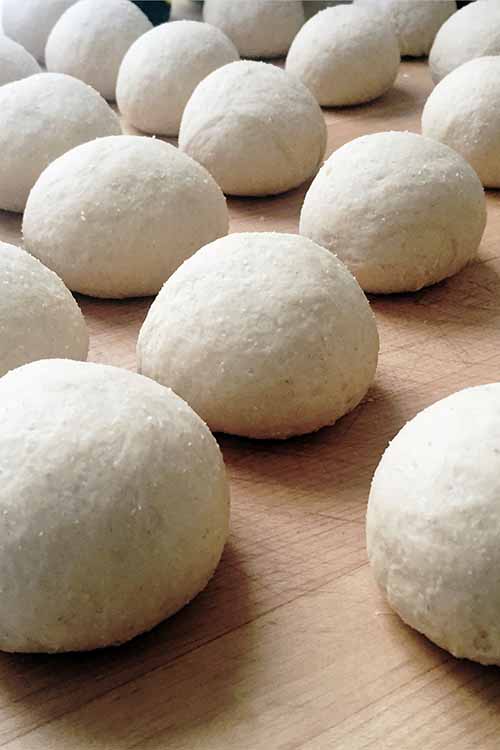
That unsuspecting envelope of granules, lost in the back of your fridge – it has the power to bring the dead back to life. Sure, it’s lying dormant right now. But feed it just a bit of water and sugar, let it fester in the right temperature, and soon it will be strong enough to take over the world!
Okay, maybe not the world.
But yeast’s ability to bring life to flour and water, to coax out the complexity of a grain’s flavor, to slowly stretch its beautiful strands of gluten, truly is miraculous.
Many home cooks are scared to approach this power. It’s a wild unknown – so delicate that the wrong temperature might kill it, but strong enough to quadruple the volume of dough.
It’s time to demystify the man behind the curtain. Because, like the wonderful wizard, once you understand it, yeast is nothing to fear.
The Basics
To start, it’s helpful to know exactly what yeast is and what it does.
Yeast is a living organism known as Saccharomyces cerevisiae. To simplify, we’ll call it SC.
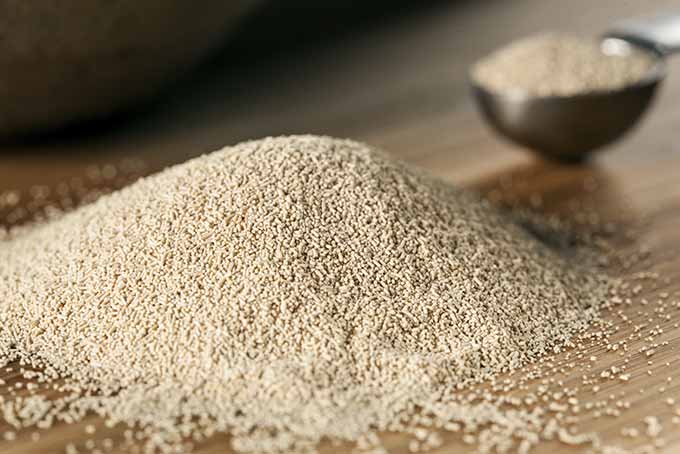
SC feeds off of starches and sugar. As it eats, it passes gas. Carbon dioxide gas, that is.
This process breaks down the structure of the grain the yeast is eating, helps to unravel and stretch the strands of gluten, leavens the dough, and imparts a tangy flavor.
Four Types to Know
There are four types of baking yeast that you should know: active dry, instant, fresh, and wild.
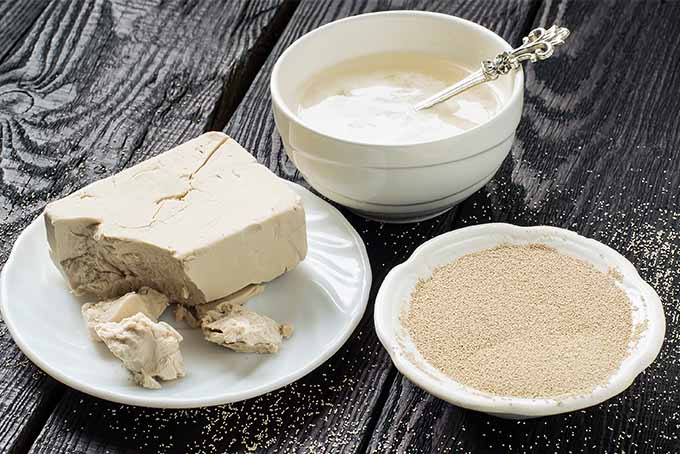
If you’ve ever purchased yeast at a grocery store in the United States, you’ve most likely worked with instant or active dry.
For these varieties, SC has been dried and ground into fine granules. The yeast is dormant (think of a hibernating bear), so it can sit in the cupboard without eating. But once awake, it is ready to devour any starch that comes its way.
Active dry, the most well-known form of commercial yeast, must first be activated in order to wake it up. Active dry likes the snooze button. It’s helpful to let him know that it’s almost time to get moving, but he’s got another ten minutes to open his eyes.
To activate, or proof, active dry, mix it with water and sugar and leave it alone for about ten minutes. Once everything dissolves, a bubbly brew will begin to form. He is awake, and hungry, and ready to roll.
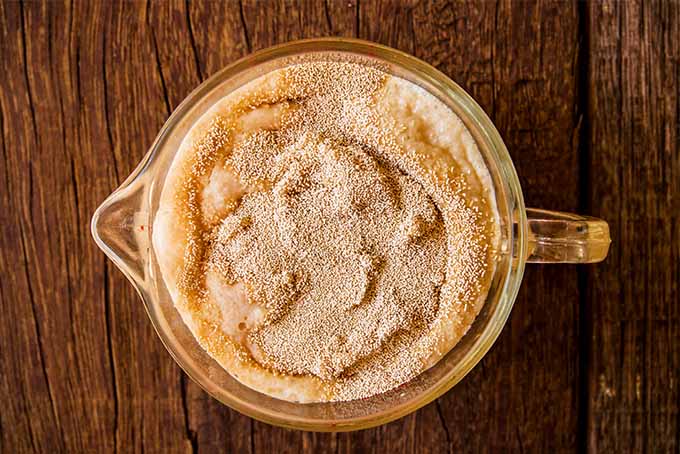
Instant, also known as rapid-rise or quick-rise, is a morning person. She doesn’t need a warning to wake up, just a quick shower, and she’s off.
Mix her in with your dry ingredients. Her smaller granules don’t take any time to dissolve, so once you add in your water, she will immediately start gorging on the feast before her. If you’ve ever worked with a bread machine, then you probably know her well.
These dry yeasts are the most common forms of commercial SC available in the United States and Canada. Most American recipes calling for yeast specify one of these two, but they aren’t your only options.
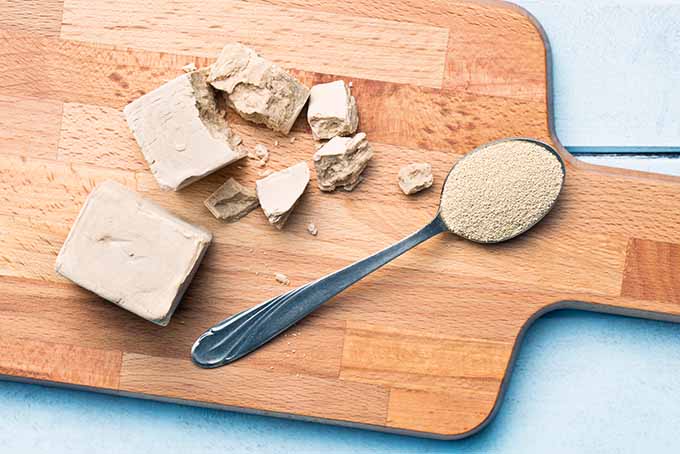
Fresh, also known as block, cake, or compressed, is a hydrated block of SC cells. Unlike the dried granules, these cells are wide awake. As such, they are much more perishable, with a shelf life of about two weeks.
This variety can be difficult to come by in the US and Canada – most often found in the refrigerated section of health food or specialty grocers. But it is ubiquitous throughout Europe.
Bakers argue whether or not fresh is best when it comes to leaven. Some swear it imparts a more delicate flavor, though others can’t seem to tell a difference.
If you yearn to learn how to work with fresh, but can’t seem to find it anywhere, try asking a local bakery if you might buy from them. But for home baking, a dried strain will do just fine.
Wild yeasts are the cells present in the air, on your body, and in flour that can be harnessed to feed your dough. These are the strains captured in a sourdough starter that slowly and steadily work their magic.
You can start your own sourdough with just flour, water, and time, but oftentimes those who already maintain a starter are more than willing to share.
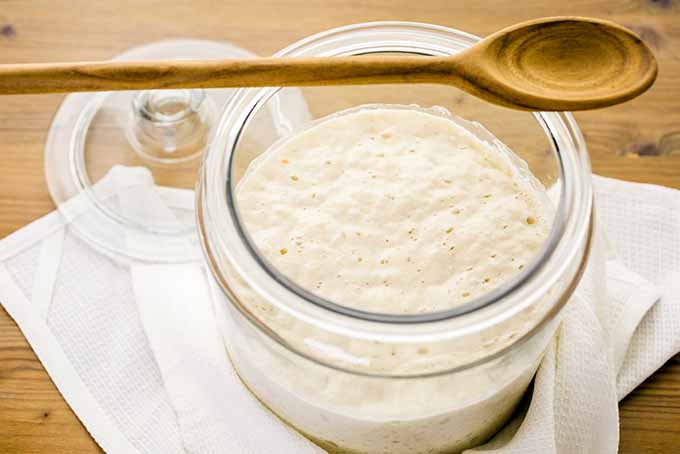
A sourdough starter is like a pet – but unfortunately it won’t bark or meow when hungry. When held at room temperature, it must be fed daily – doubling, or sometimes quadrupling, each time. If you don’t plan to use it often, store it in the freezer, so you don’t get overrun by its voracious appetite.
Though the function of these wild strands is just the same – it feeds on sugar and starch, breaking down grain, stretching gluten, and passing gas – the process is significantly slower than with commercial SC.
Sourdoughs are fascinating to work with, but they do require a baker who is willing to get to know her bread, and the effects of the surrounding climate. While sourdough recipes do exist, they are difficult to standardize. Even following a recipe requires getting to know the scent, the sight, and the feel of the dough.
How to Substitute Varieties
Active dry, instant, and fresh varieties can be interchanged in almost any recipe, so long as you know the conversion factor and incorporate it at the right time.
When subbing instant for active dry, use between 80% and 100% by volume or weight. The smaller granules of the instant variety get to work much more quickly than active dry. When exchanged one to one, instant yeast allows for a faster rise.
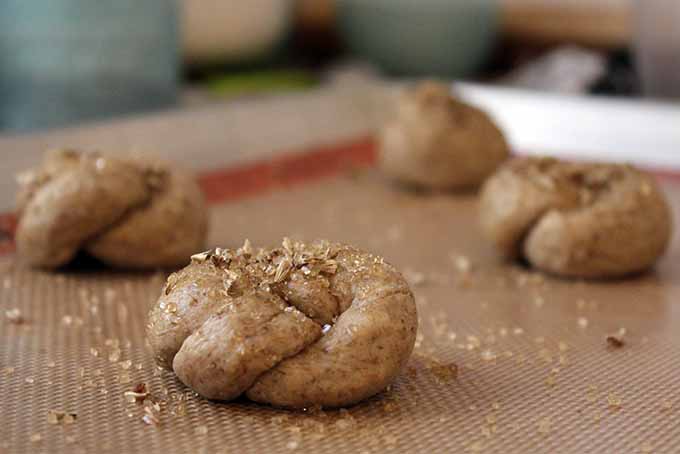
While this might be beneficial for a speedy bake, it will impart less flavor than the same amount of active dry. Using 80% (for instance, 8 grams of instant yeast in a recipe calling for 10 grams of active dry) will yield identical results in both flavor and time. If you’re looking to speed the process but don’t want to sacrifice as much flavor, experiment using between 85-95%.
When working in reverse, aim for a conversion of 100%-125%. If a recipe calls for 10 grams of instant, the same amount of active dry will result in a slower rise time, but with further development of flavor. 12.5 grams of active dry will provide the same flavor and require the same amount of time as 10 grams of instant.
Remember that in a recipe calling for instant yeast, if substituting active dry, you must first dissolve the granules with the recipe’s water and sugar. Let it sit for ten minutes to wake it from its slumber.
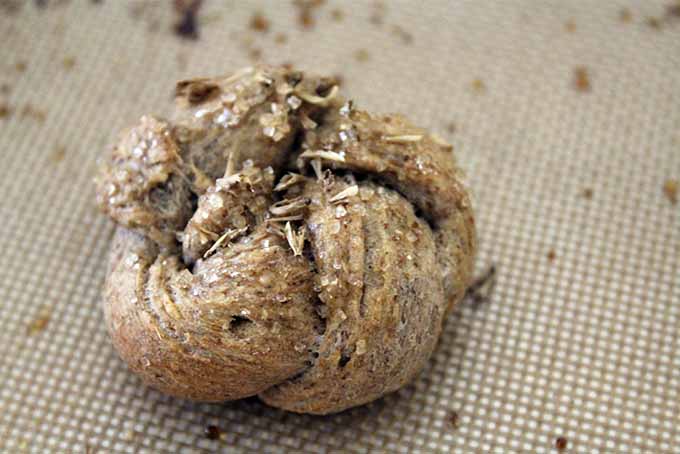
If working in reverse, the steps are simplified. When using instant in a recipe calling for active dry, feel free to skip the initial proofing phase. Just throw the granules straight in with the flour.
When substituting fresh for active dry or instant, the ratios are 200% and 250%. A recipe calling for 10 grams of active dry requires 20 grams of fresh. If asked for 10 grams of instant, you’ll need 25 grams.
In reverse, it’s 50% and 40%. 10 grams of fresh yeast equals 5 grams of active dry, or 4 grams of instant.
Fresh yeast should first be crumbled and whisked together with wet ingredients to break it up, but there is no need to wait for it to bubble like with active dry. Once whisked into water, it is safe to add flour.
| Recipe Calls for Active Dry | Convert to Instant | Convert to Fresh |
|---|---|---|
| 1 teaspoon | 3/4 teaspoon* | -** |
| 1 ounce | 0.8 ounces | 2 ounces |
| 10 grams | 8 grams | 20 grams |
| Recipe Calls for Instant | Convert to Active Dry | Convert to Fresh |
|---|---|---|
| 1 teaspoon | 1 1/4 teaspoons | -** |
| 1 ounce | 1.25 ounces | 2.5 ounces |
| 10 grams | 12.5 grams | 25 grams |
| Recipe Calls for Fresh | Convert to Active Dry | Convert to Instant |
|---|---|---|
| 1 ounce | 0.5 ounces | 0.4 ounces |
| 10 grams | 5 grams | 4 grams |
*Volume measurements are less precise than weight measurements, particularly when converting such small amounts. I always recommend working with weights, but in a pinch, 3/4 of a teaspoon is close enough to 8/10 of a teaspoon.
**Because fresh yeast is a much different density than dry, and because it cannot be crumbled consistently, it is necessary to always work off of weight measurements rather than volume.
Tips for Baking with Yeast
Remember, He’s Alive!
If he gets too hot, he’ll die. While his appetite is primed in a warm environment, he can only take so much. The ideal water temperature when working with SC is 100-110°F.
Since your body hovers around 98.6°F, this is a helpful measure. 100°F will feel just slightly warm to the touch, not hot. As you knead, friction will increase the temperature of the dough, so it’s important that you don’t start off too hot.
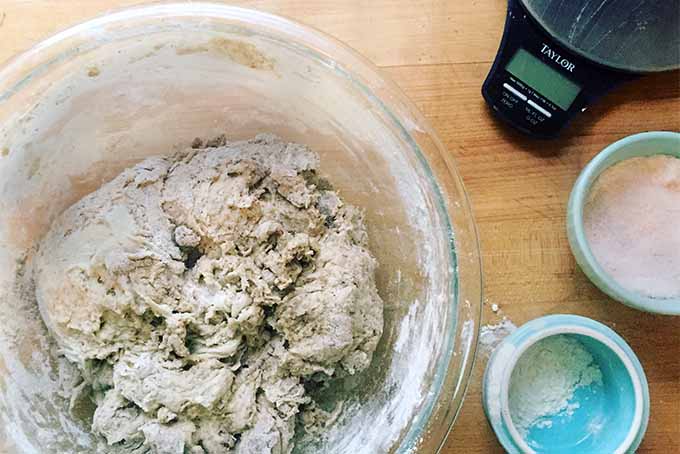
And He Kneads a Nice Home
Kneading the dough stretches out the gluten, the long strands of protein in wheat. Each strand starts out curled up in a tight ball. As you work the dough, you slowly unravel the strands and interlock them with one another.
This creates the structure that can capture SC’s gas. But gluten strands are delicate – when they don’t want to stretch, they break.
Knead slowly and steadily. If the dough feels tough or starts to tear, give it a five-minute break and come back. The gluten is just tired, and wants some time to relax.
Have Patience
While commercial versions of our friend SC were cultivated to speed things along, they can only go so fast. Don’t rush the rise.
Different recipes follow different procedures for this phase, called fermentation. It all depends on the needs of the dough. In this phase, SC is chowing down on sugar and starch, working his way through the batter.
Oftentimes a recipe will call for you to gently punch out the gas. No one likes to eat when they’re bloated, and SC is just the same.
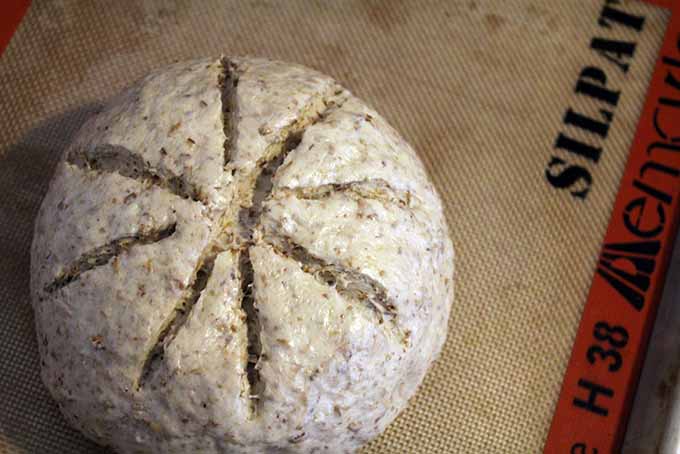
But Not Too Much!
After shaping your dough, let it rest one final time. You’ve worked those gluten strands hard to bend them to your will, and now they’re really tired. They need to relax for a bit before they can handle the rigors of the oven.
You’ll know the dough is ready when you can touch the surface and the indentation slowly disappears. If it springs back into place, give it a bit more time. If it collapses, you’ve gone too far.
Overproofing occurs when your hungry, hungry yeast eats up all the sugar. When there’s nothing left for him to feast on, he shrivels up to die. There is no hint of sweetness left in the dough to tickle your taste buds, and instead it’s replaced with the fermented flavor of too much CO2 – not to mention, there’s no sugar to caramelize and form a nice brown crust.
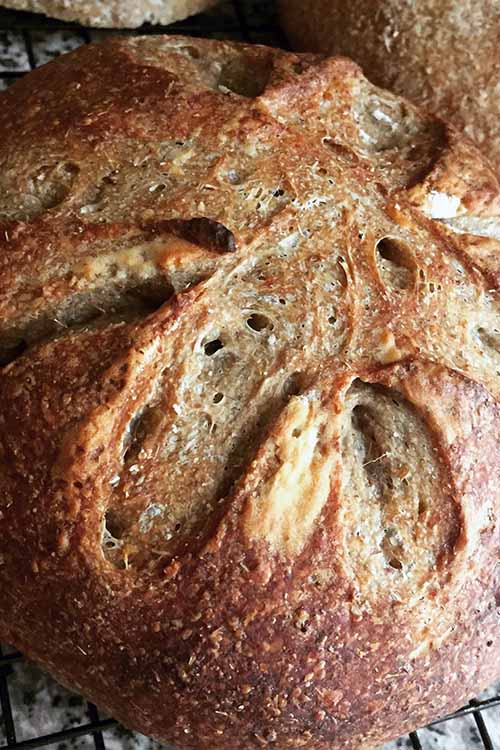
While S. cerevisiae is a powerful little creature, there is no need to let him intimidate you. Just think of him as a handy sidekick who’s in need of some TLC. As you learn to listen to his needs, he’ll treat you well in return.
Put these tips into practice! Try one of our many wonderful bread recipes from around the world, both sweet and savory:
- Chocolate Banana Braided
- Dark Rye
- Italian Easter Egg
- Kulich
- Pain Paillaise
- Ramson Pull-Apart
- Rhubarb Braid
- Roasted Garlic
- Sour Barley Pita
- Twisted Cinnamon & Cardamom Loaf
And a few others that are made with a yeast dough:
- Cinnamon Franz Buns
- Homemade Pretzels
- Pizza Dough
- Brown Butter Brioche Rolls
- Easiest Ever Garlic Knots
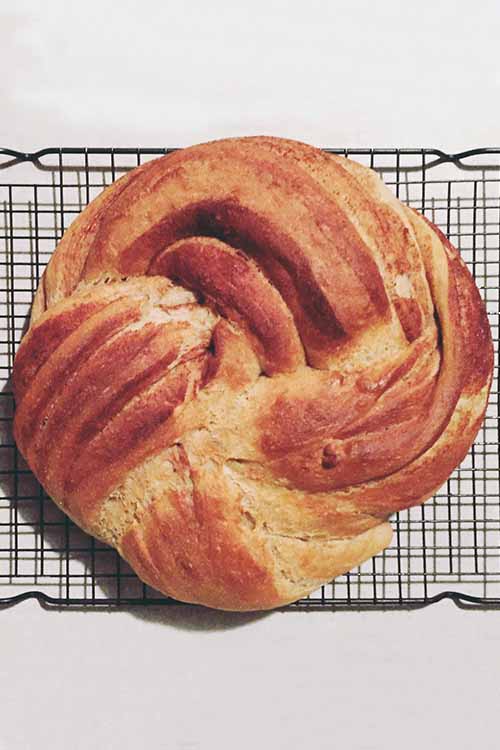
Are you still nervous to start working with yeast? Have you had some frightening dough failures in the past that keep you from moving forward?
Let me know in the comments why this tiny organism continues to make you tremble – because if you just get to know him, I promise you’ll be friends.
Don’t forget to Pin It!
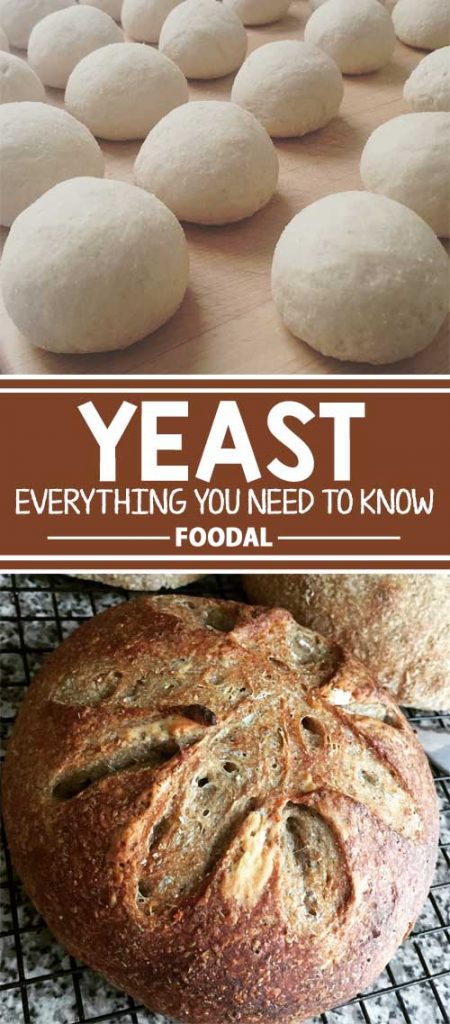
Photos by Kendall Vanderslice, reprinted here with permission. Uncredited photos: Shutterstock.
About Kendall Vanderslice
Kendall’s love of food has taken her around the world. From baking muffins on a ship in West Africa and milking cows with Tanzanian Maasai, to hunting down the finest apfelstrudel in Austria, she continually seeks to understand the global impact of food. Kendall holds a BA in Anthropology from Wheaton College and an MLA in Gastronomy from Boston University, and has worked in the pastry departments of many of Boston’s top kitchens. Based in Somerville, Massachusetts, Kendall helps to run a small community supported bread bakery and writes about the intersection of food, faith, and culture on her personal blog, A Vanderslice of the Sweet Life.


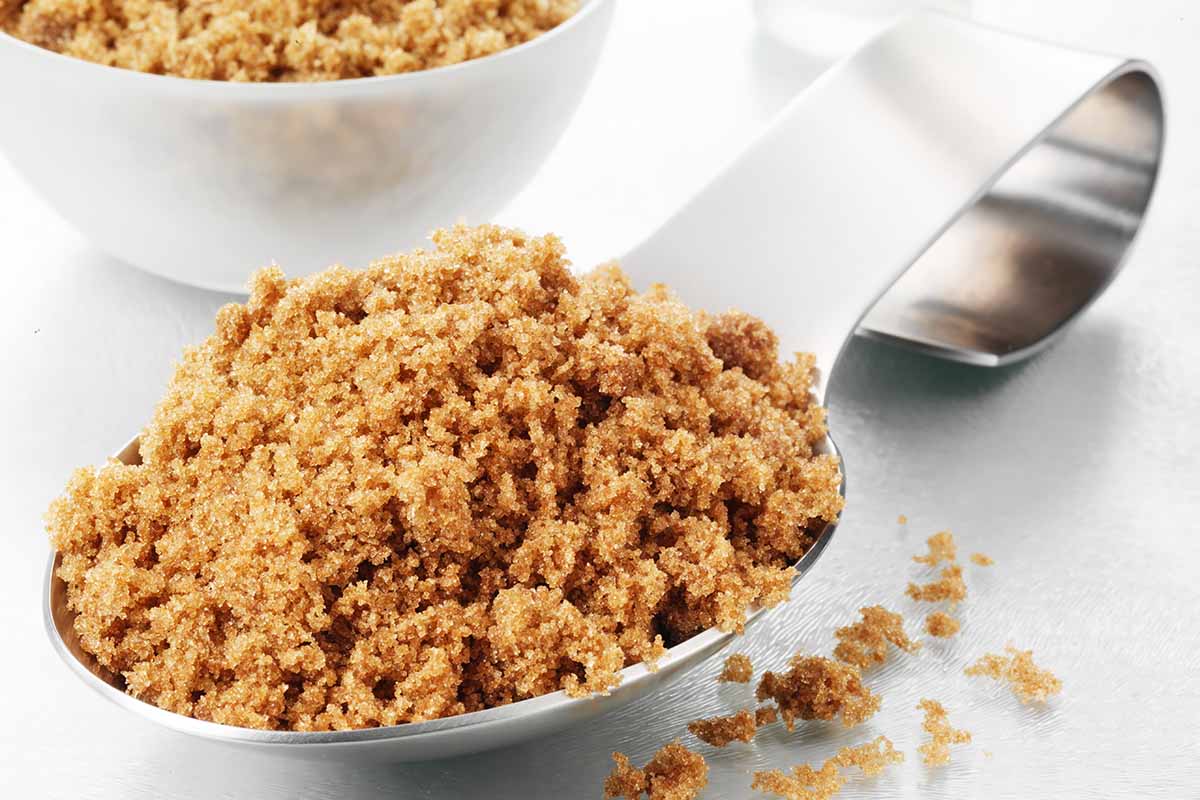
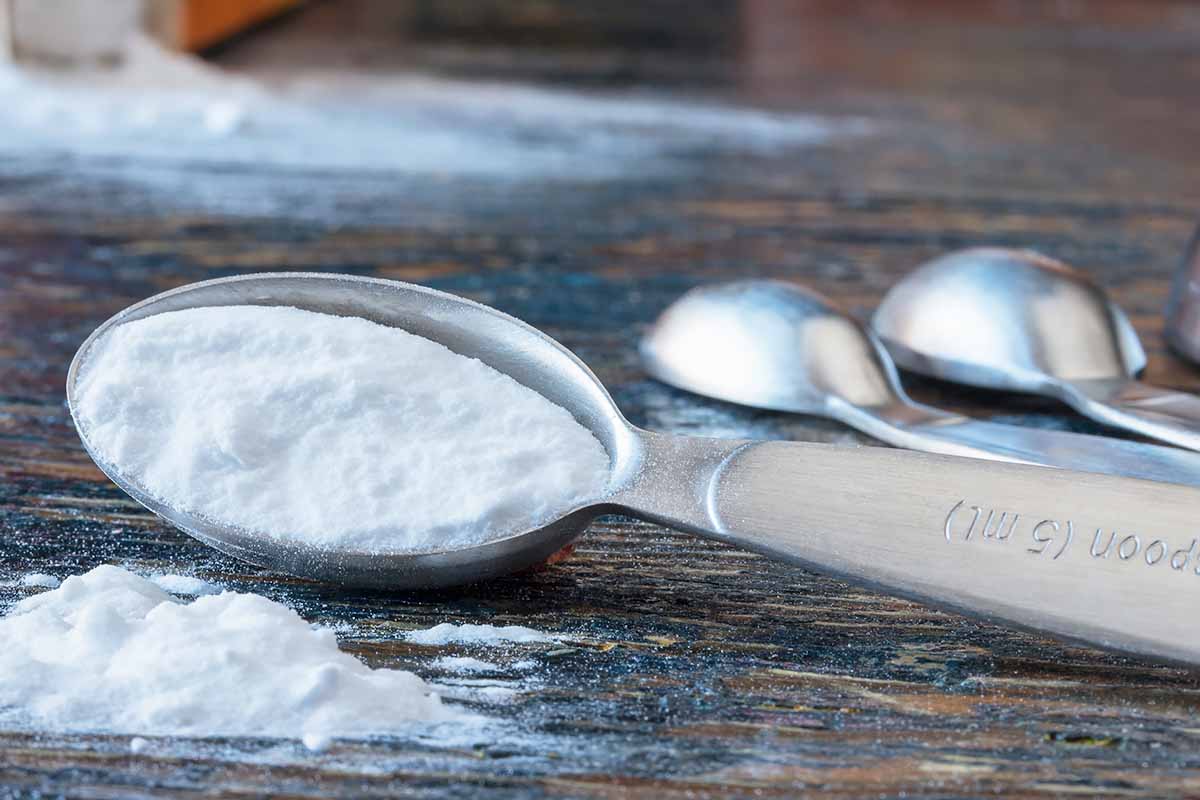
I’ve been contemplating making some sourdough bread, and now I want to try it. I do a lot of baking at home and work with yeast a lot. In fact, I made two large trays of hoagie rolls over the weekend for the family. There’s nothing like the smell of fresh bread in a home, but anyways, I want to stretch my knowledge when it comes to bread making.
Wow, I really didn’t know there are four types of yeasts, I found this article very informative and I’m looking forward to baking new treats, I’ve gained a new perspective now, thanks!
It’s fascinating to think of yeast as a living organism, I kind of knew that before, but you’ve made it so vivid here by endowing the different types with different personalities. Is it yeast, or poor kneading, that sometimes creates large gaps in the inside texture of bread?
The gaps are a likely a combination or poor kneading and/or poor shaping. If the dough is significantly under kneaded, it will be very crumbly. If it is not well shaped, it will have an uneven crumb — or gaps. I’ll be posting a few more bread recipes in the coming weeks that will cover both kneading and shaping. Keep an eye out!
I only ever used the instant dry kind in my baking, I didn’t even know fresh yeast existed. It is indeed magic, I don’t even attempt to understand the science behind this, I just chalk it up to a magic trick without explanation.
Thank you for this very informative and unique view of yeast. I have always wondered what makes the little critters work properly, and why I often fail to make my baked goods rise. Now I have a much better idea of what it takes to use this ingredient properly, so perhaps I will become more successful in the kitchen from now on. What does it take to keep the yeast from over-indulging on the sugar? I want to prevent this from occurring if at all possible.
Mainly it is just baking it in time! When it is warm outside, you really have to keep an eye on it while it proofs — a few minutes can make a big difference. When it is cooler, things move more slowly and you don’t have to remain as vigilant. The best sign that it is ready to bake is that you can touch the dough lightly and the indentation will slowly return to place. If it is tough, or springs back quickly, it’s not quite ready yet.
Wow, it really looks amaizing! Will try it soon!
Hey,
Great article. As I read about the yeast getting tired and being bloated I imagined mini minions at work in our bread and other goodies. Your view on yeast is very insightful and creative. I am looking forward to reading more of your posts!!
I have successfully made cinnamon buns (which requires you to punch out the dough -poor bloated yeast minions).
I love the imagery of mini minions! Yeast seems much less intimidating when you begin to realize its alive and has personality 😉
I love making my own bread at home and I usually use Active dry yeast. I think I am going to try and make some sourdough loaves after reading this though. That is one we haven’t made at home before.
It’s true that love for good food can take you to any corner of the world. But being a foodie and have an appetite for learning all those recipes and ingredients at the same time is a rare combination. I also make my bread at home sometimes but so many types of bread and so much to know about yeast!!!!! I enjoyed this to every bit and look forward to more.
Yeast is something that I think can be intimidating, particularly to a new baker. I know when I first started baking, I did everything I could to avoid yeast. This article was a great introductory guide to the sorts of yeasts that are available and how to use them. Now that I’m more comfortable working with yeast, I find myself buying virtually no pizza or biscuit dough “in a tube” like I previously was purchasing several times a month.
I’ve only ever used yeast in my home-brewing class, but I would certainly love to learn more about how to use it in the kitchen. Thanks for sharing this super-informative article. It’s really great that you make it so easy for even us newbies to understand these things.
I’m glad this was so helpful, Clair022! Yeast often intimidates people, but it really should not. I’m glad I could make it approachable.
Lovely & very well written article about yeast. I’m learning SOURDOUGH culturing and baking and just loving my baked goods and the fact that even the discard does wonders for everything I use it in. Keep writing and baking! Your talent delights!
Whay type of dry yeast do I need to use for lamination? I am making pudding pretzels and it calls for using cold milk with live yeast, but i can’t get live yeast.
I believe you’re probably referring to fresh yeast? As we explain in this article, fresh yeast has a different density than dried varieties and you can convert to active dry or instant in any recipe using the measurements outlined in the provided chart and the conversion instructions described above that.